Love Is In The Air!
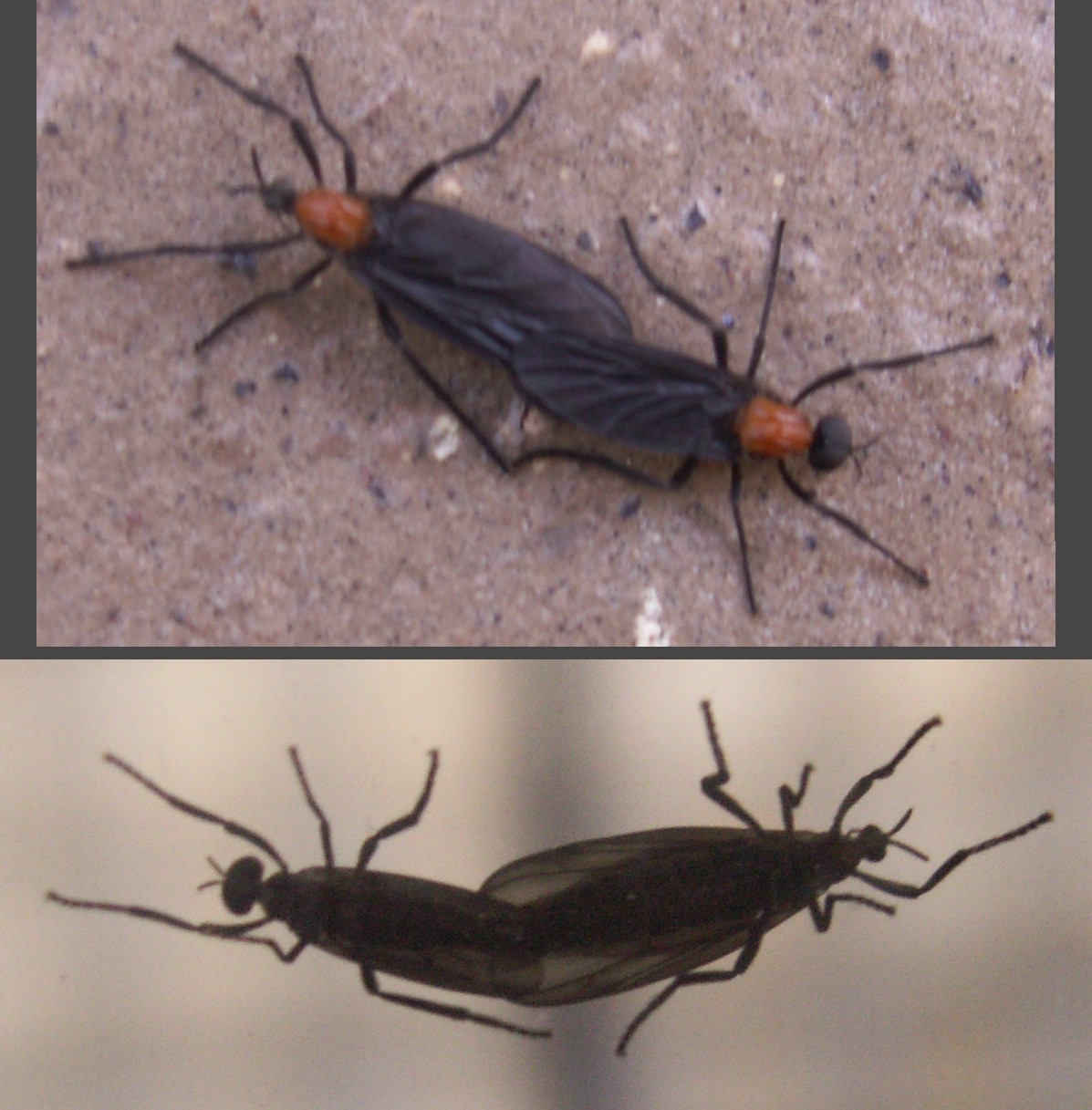
... and on the walls, the windows, the car windshields and radiator grilles, the strap of my tote bag, my leg....
When I got home from my errands Mary was sitting on the couch. I called over to her, "I just made my first sex video!"
She deadpanned, "And you're proud about that."
"Yep!"
"Which insect?"
"It's September," I said. "Which insect do you think?"
She sang, "Loooooooooove Buuuuuuugs!" (to the tune of the theme from "Love Boat").
I adore these little guys. Most folks think they're pests, but I tip my hat to these flies. They swarm in May and September -- our May swarm was minimal and our September swarm started late, but the lovebugs are now out in full makin' whoopie mode. The top shot above comes from the wall outside our local bank. I took the bottom shot of another happy couple's underside at the post office.
Genus Plecia (Lovebugs) , Family Bibionidae (March Flies). There are two North American species P. americana and P. nearctica. Based on this University of Florida page, I'm guessing this is nearctica.
The larger of the two (and the one with the smaller head) is the female. Whether flying or walking, she drags the male behind her wherever they go while they're connected. One couple performed some real heroics as I drove to teach my class on Saturday. The female was holding onto my windshield for dear life, while the male was being buffeted every which way, and still they stayed together! I was watching the road, slowing down as much as I dared, relieved when I finally came to a stoplight. After a few moments she had enough strength to fly off, with him still attached, and I sent up a little cheer.
Love Is In The Air!: The Sex Video (1:10)
There's no stoppin' the ladies -- they've got things to do, places to go, bugs to see. If anyone out there thinks his or her partner seems distracted during sex, just look at these intrepid souls. I feel bad whenever I see one hangin' out all alone.
Meanwhile, back at the retention pond, two butterflies zip about each other before flitting across the street.
Butterfly Play (00:16)
They were too distant for me to figure out what species they are, but I could see black and yellow markings -- so I suspect they're either Eastern Tiger Swallowtails or Giant Swallowtails.
Cloud Layers (1:07)
This video was Mary's suggestion, and that's her voice commenting to a neighbor on what I'm doing.
I weed-whacked this morning -- after Mary had gone through the yard and ripped out what she calls "Grab Grass."
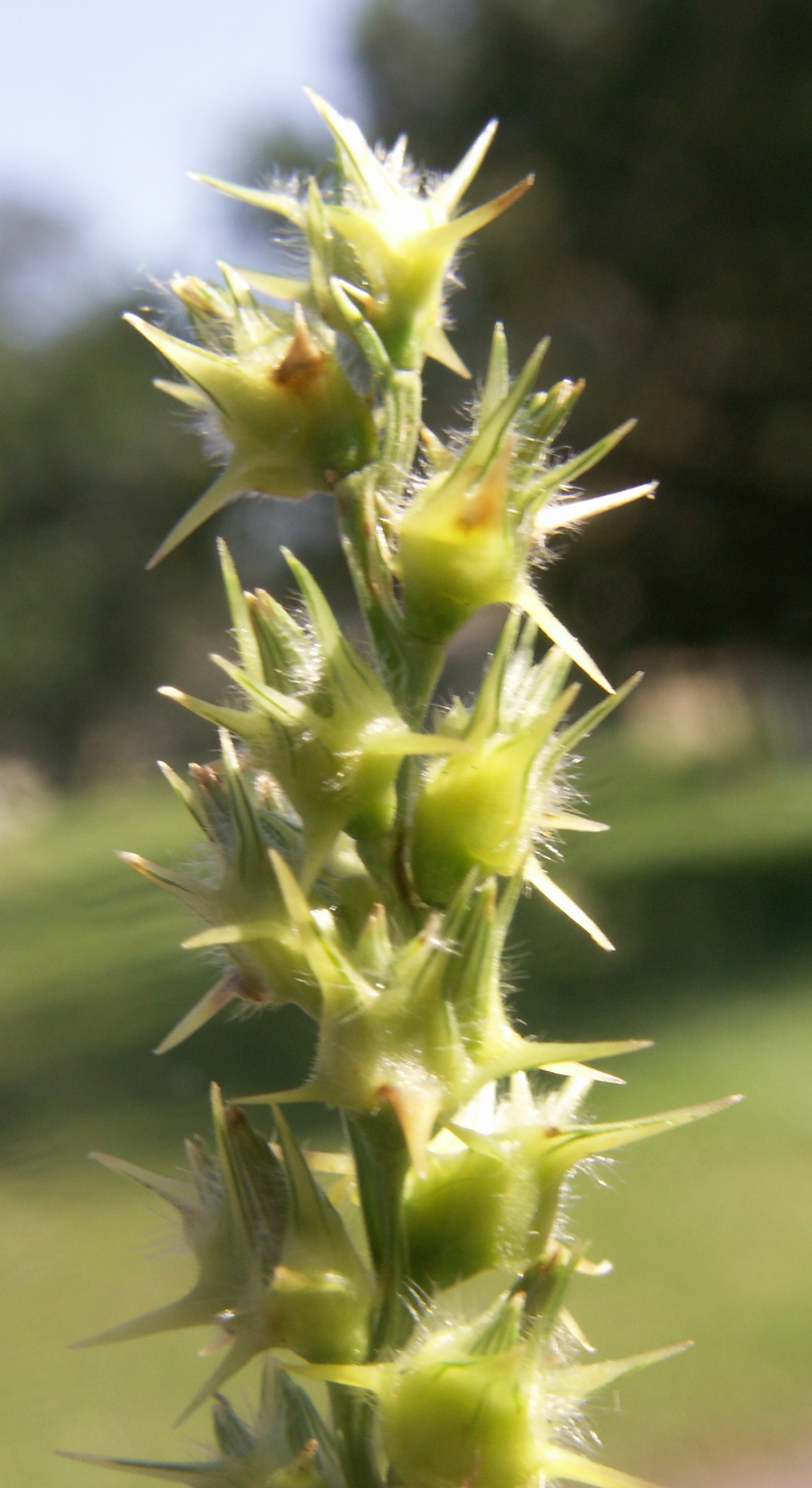
Each of these tenacious, painful burrs is about 5mm in diameter. Before this plant seeds it looks like ordinary grass. This is the reason why I wear long pants when I weed whack regardless of how hot the temperature is. Shortly after we moved here I wore shorts while weed-whacking and drove one of the burrs into my leg. I felt for sure I'd been stung by a wasp.
I'm guessing this is a Southern Sandspur (Cenchrus echinatus L.) in the Gramineae (Poaceae) or Grass Family. According to the University of Florida, the other sandspur that occurs in the southeastern U.S. is the Coast Sandspur. The seedheads of that one occur all year, unlike the specimen shown here.
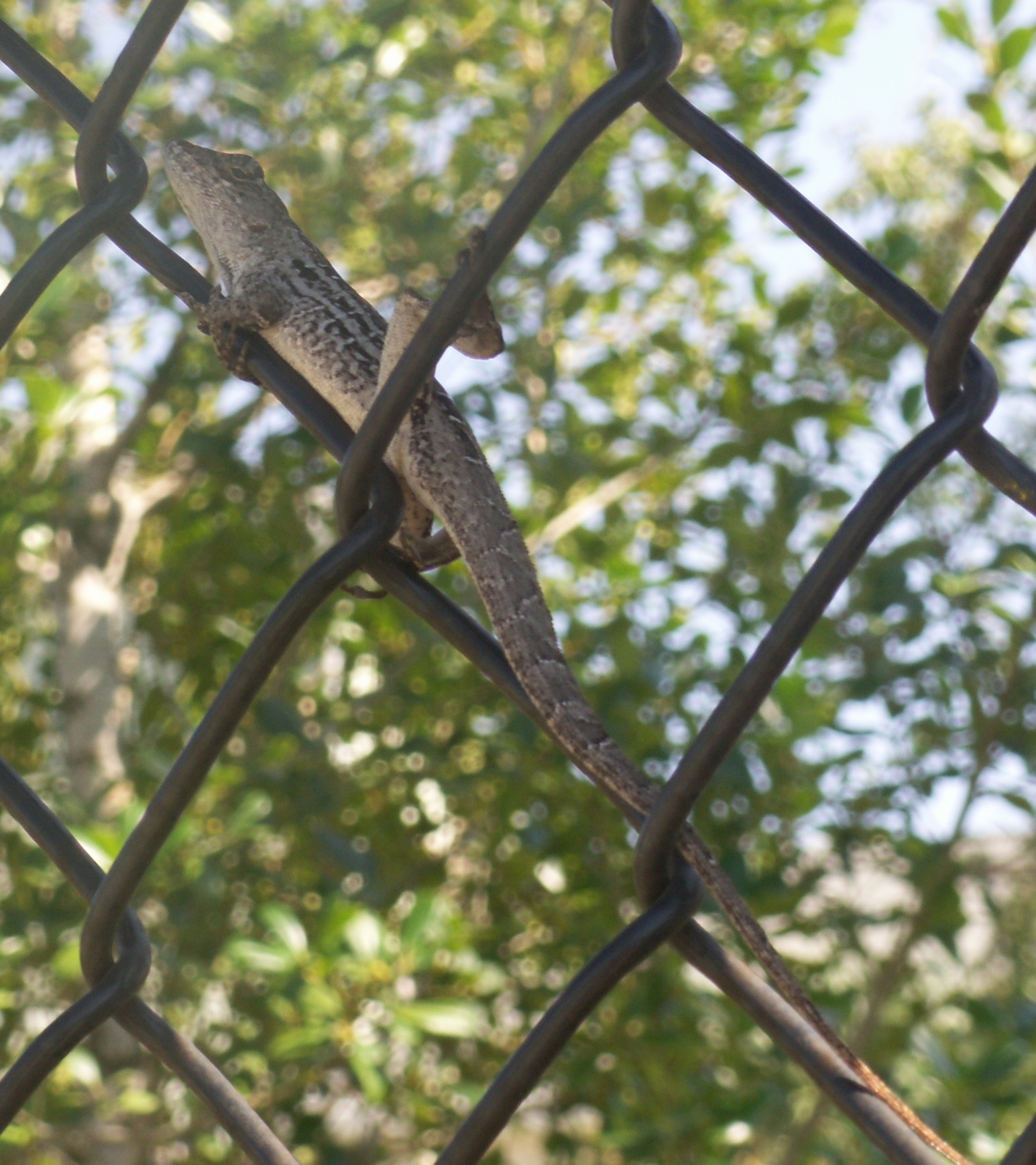
This lizard was relaxing in the chainlink fence by a fairly new housing complex I pass on my post office walk. It is probably a brown anole (Anolis sagrei, Family Polychrotidae). Brown anoles came to Florida from the Caribbean and are an invader species.
According to the Institute for Biological Invasions, the brown anole "colonized south Florida and Mexico about 50-60 years ago, and more recently, Hawaii.... This species is arguably the most abundant terrestrial vertebrate in peninsular Florida, and often reaches densities of more than one individual per square meter in disturbed habitats!"
Unfortunately, this lizard "is thought to be responsible for a dramatic decline of previously stable urban and rural populations of the green anole, the only anole native to the United States."
The moths were out in force during my post office walk the other day, hanging out at the strip mall.
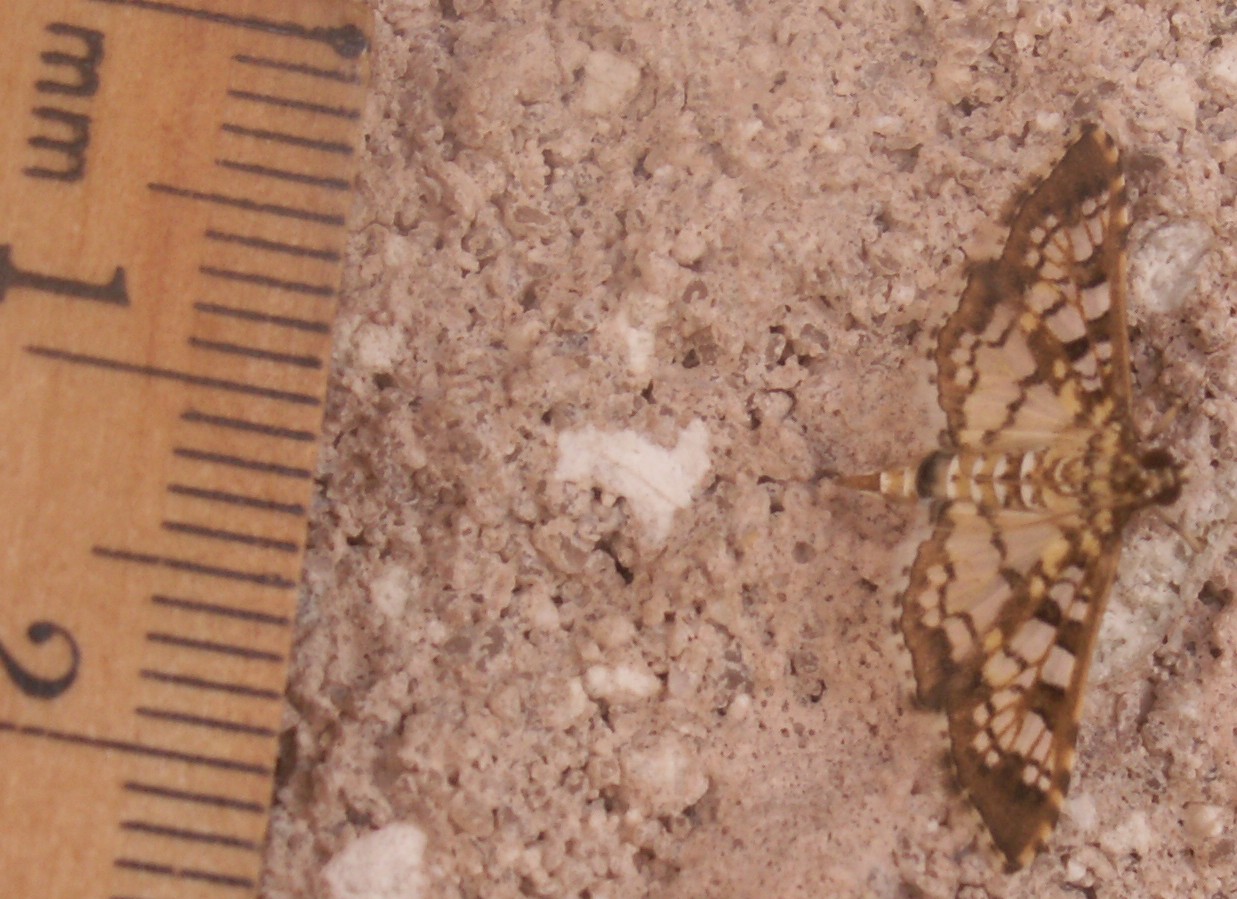
I suspect this is either an Assembly (Samea ecclisialis) or Waterlettuce (Samea multiplicalis) moth. Whatever the species, I think I also photographed one or the other here, back in December 2005.
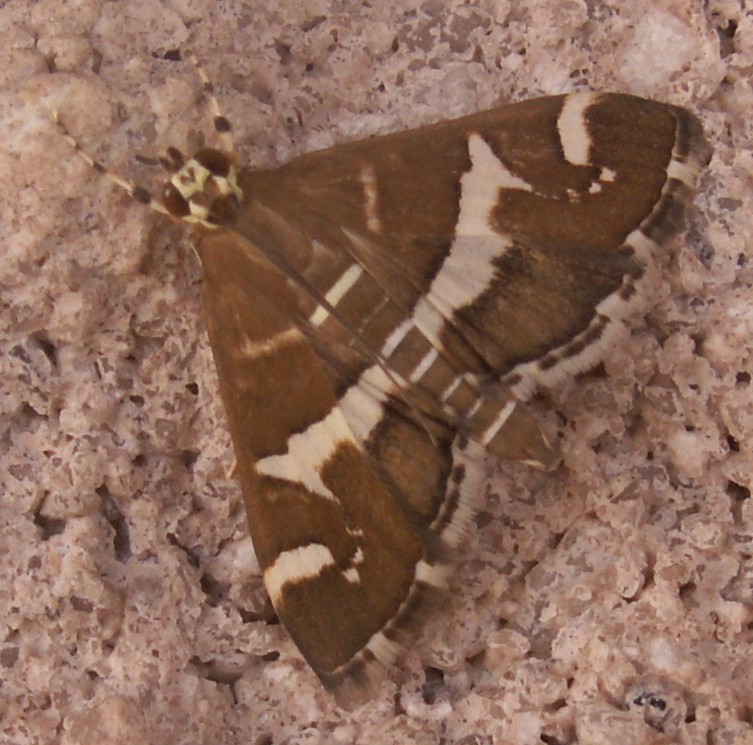
Hawaiian Beet Webworm Moth. Spoladea recurvalis, Family Crambidae (Crambid Snout Moths). This is also called the Spinach Moth in Namibia, Africa. "Common in the south; uncommon late summer migrant in the northern states, Canada, and Europe," according to Bugguide.Net. The markings on this thing make me think of a cow.
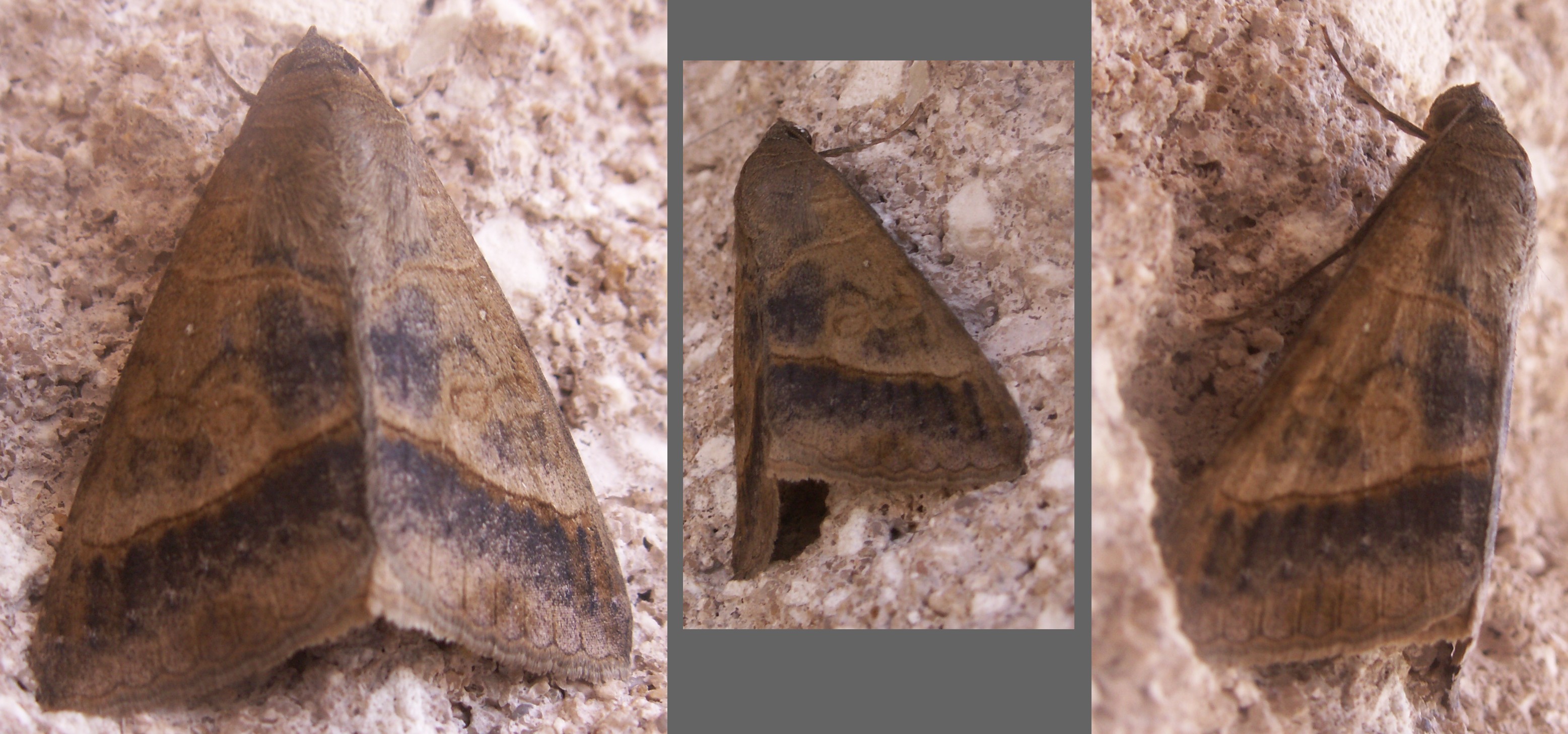
Small Mocis Moth. Mocis latipes, Family Erebidae. According to Bugguide.Net, this moth ranges from southern Ontario and Quebec to Florida, west to Arizona, north to Minnesota; and also occurs through Central and South America. Adults fly June to October and frequent fields, grasslands, gardens, open areas -- and apparently the mall. The larvae, called the Striped Grass Looper, feed on grasses, including rice and corn; also beans and turnip.
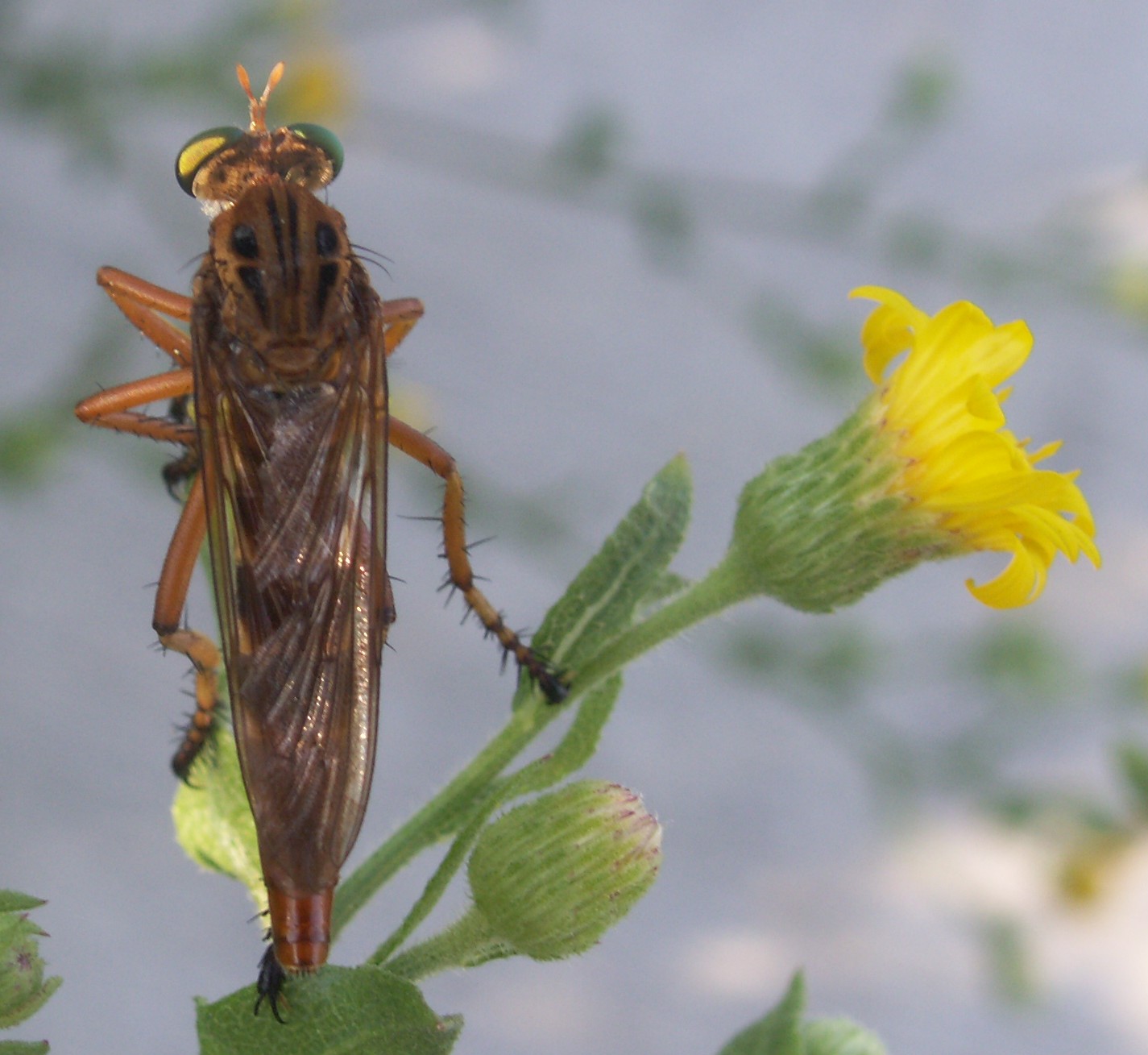
I'm guessing this is Diogmites esuriens, Family Asilidae (Robber Flies) based on the thorax detail. These are also known as "hanging flies" due to their characteristic habit of dangling by their front pair of legs when feeding.
A good guide is at Random Natural Acts. This page shows the difference between the esuriens and misellus species.
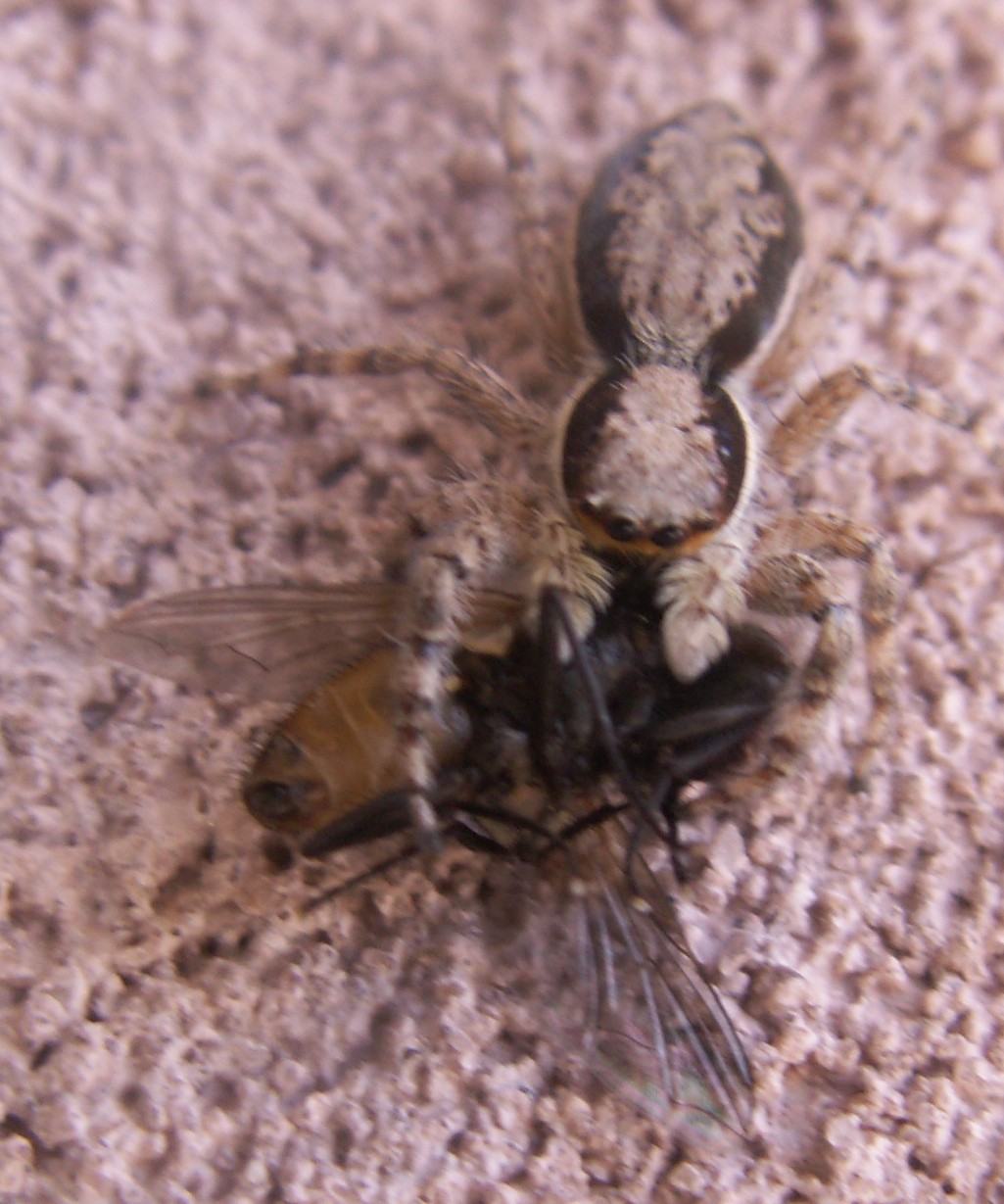
Gray Wall Spider (Menemerus bivittatus, Family Salticidae (Jumping Spiders)) with prey. This little one was outside the entrance to the supermarket. Food for all! This is the same species shown and described in this entry.
Yesterday marked my 57th consecutive day of adding to the draft of Book #4. I'm spiraling in toward the climax in this next-to-last chapter, and I think I finally figured out (while lying in bed after this morning's weed-whacking) how to move all the props into place the way I want them.











2 Comments:
Your trips to the Post Office, or the supermarket, or to teaching on Saturdays are nature walks, no doubt about it. Florida is teeming. And your shutter-bug on the love-bugs was hilarious, heart-warming, endearing and rather racous, if you ask me (though no-one did)!
I knew it was going to be bugs when I saw the title! Did you read my line last Thursday. I squished two bugs eating my Dahilia flower and shouted THE HONEYMOON IS OVER. It was mean, I know.
Post a Comment
<< Home